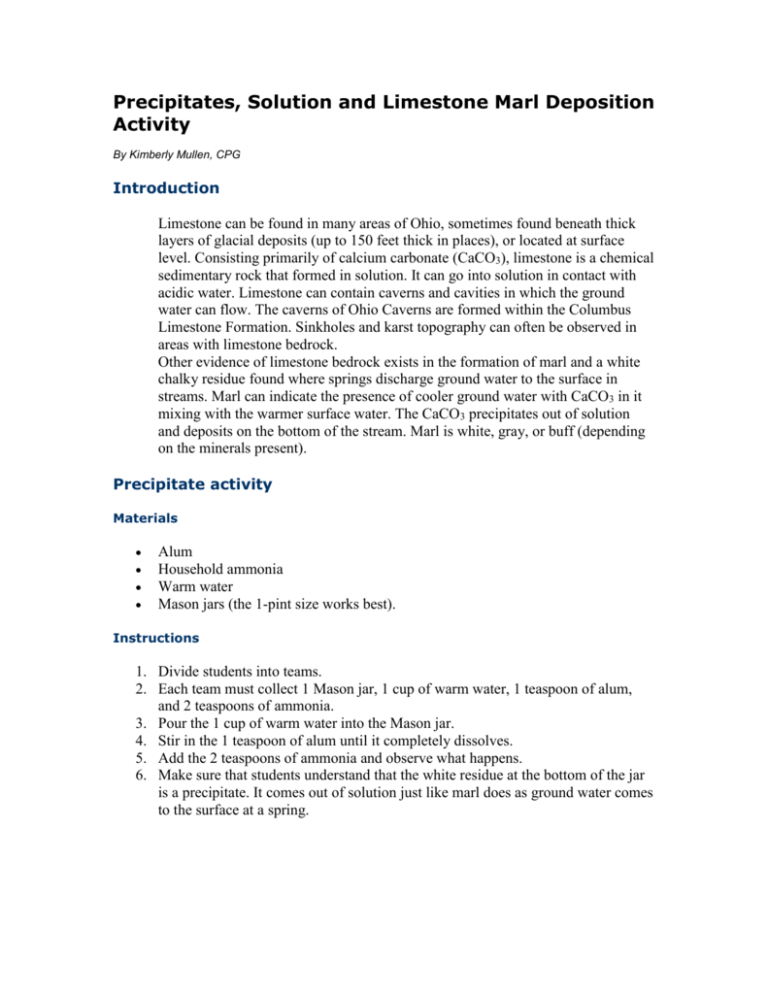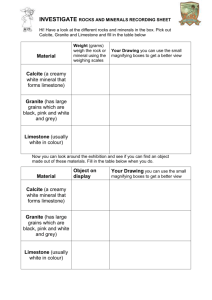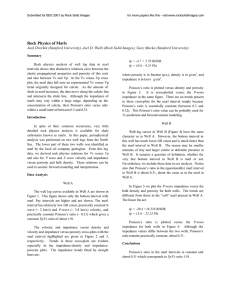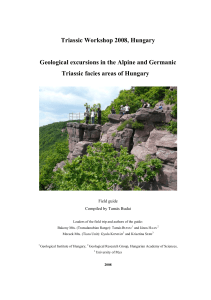Precipitates, Solution and Limestone Marl Deposition Activity
advertisement

Precipitates, Solution and Limestone Marl Deposition Activity By Kimberly Mullen, CPG Introduction Limestone can be found in many areas of Ohio, sometimes found beneath thick layers of glacial deposits (up to 150 feet thick in places), or located at surface level. Consisting primarily of calcium carbonate (CaCO3), limestone is a chemical sedimentary rock that formed in solution. It can go into solution in contact with acidic water. Limestone can contain caverns and cavities in which the ground water can flow. The caverns of Ohio Caverns are formed within the Columbus Limestone Formation. Sinkholes and karst topography can often be observed in areas with limestone bedrock. Other evidence of limestone bedrock exists in the formation of marl and a white chalky residue found where springs discharge ground water to the surface in streams. Marl can indicate the presence of cooler ground water with CaCO3 in it mixing with the warmer surface water. The CaCO3 precipitates out of solution and deposits on the bottom of the stream. Marl is white, gray, or buff (depending on the minerals present). Precipitate activity Materials Alum Household ammonia Warm water Mason jars (the 1-pint size works best). Instructions 1. Divide students into teams. 2. Each team must collect 1 Mason jar, 1 cup of warm water, 1 teaspoon of alum, and 2 teaspoons of ammonia. 3. Pour the 1 cup of warm water into the Mason jar. 4. Stir in the 1 teaspoon of alum until it completely dissolves. 5. Add the 2 teaspoons of ammonia and observe what happens. 6. Make sure that students understand that the white residue at the bottom of the jar is a precipitate. It comes out of solution just like marl does as ground water comes to the surface at a spring.











